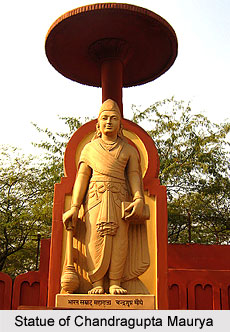The British government in India introduced decentralization of economy. With the decentralization, the Indian economy tended to become more and more agricultural. Millions of manufacturing units in the Industrial towns like Dacca, s Murshidabad, Surat and other places were rendered unemployed . As a result they were drawn from towns to villages for a livelihood. This resulted with an increasing dependence of the majority of population towards agriculture for subsistence. The inclination of the Indian economy, towards the production of agricultural goods and neglecting the industrial development has been described by the historians as a trend towards Ruralization of the Indian economy.
The British economic policy towards the Indian economy made the Indian financial system extremely rural and agriculture based. The British after conquering India adopted certain economic policies, which completely shattered the handicraft industry of India. Later the British Governments of India helped to develop the agricultural resources of India to make it an "agricultural farm" of industrial Britain. As early as 17th March 1769, the Courts of Directors desired the company`s agents to accentuate the production of the s raw silk and to retard the manufactures of silk fabrics. To fulfill their objective they forced the silk winders to work in the company`s factories thereby prohibiting them from workings in their home. Thus the Indian handicrafts were completely shattered. To materializes their policy of compulsion-cum-encouragement, the British Government appointed a Select Committee in the House of Commons in the year 1783. The Select committee was entrusted with the charge to changes the whole scenario of the industrial country, in orders to renders it a field of the produce of the basic material subservient manufacture of Great Britain.
The industrial revolution had introduced a change in the pattern of the European economy. Its widespread textile industries required raw materials for the manufactures in the factories and also needed markets for the sale of the industrial products. These developments in the British economic structure led to a rapid change in their process of exploitation in India. The change was marked when the trends of replacing the mercantile capitalism with free trade capitalism was introduced. The abolitions of company`s monopoly of trade in India and the closing of its commercial business were the results of the economic developments in England.
In due course the industrialized Britain desired the development of a vast potential of Indian agricultural resources. However a possible obstacle was the poor quality of the Indians raw material. To make good out of this deficiency, it was necessary for the British to come up and settle in India. The charter Acts of 1833 removed all the restrictions on the Europeans immigration and the acquisition of the landed property in India. The British capital were flowed in plenty to develop India`s plantation industry, which could provides raw materials to the industries in India and at the same time helped the British to make enormous profits in the market. The Government of India provided adequate facilities in this process. The Assam Wasteland Rules provided for the grants of extensive tracts of land upto 3000 acres per holder as freehold property. These lands were also exempted from land taxes on the payment of fixed sums. The tea planters of Assam used trickery to recruits labor for work in the tea estates. The Governments of India provided certain legislative sanctions by legislating the process of exploitation. Act XIII of 1859 and Inland Immigration Act of 1882 declared that a breach of contracts would be considered as a criminal offence. Moreover the acts authorized the tea planters to arrest a run-away laborer without any warrant.
The insistence on the Indian economy created serious distortions in Indian economy apart from creating serious problems in the agrarian sector. The economic policy of the British also retarded the growth of the agricultural production. As a whole the complete economic stagnation and the ruralization of economy led to increasing poverty in the first quarter of the 19th century.








